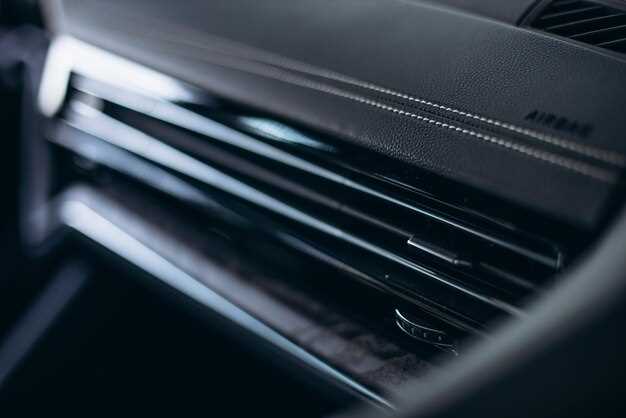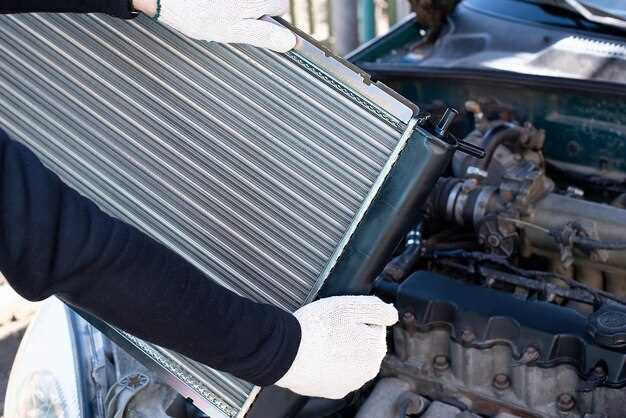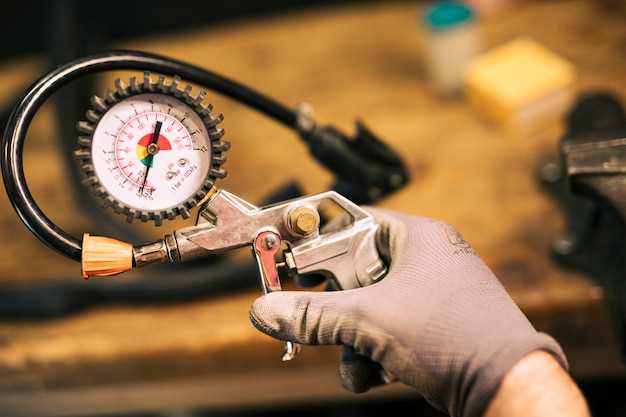
Intercoolers play a crucial role in the performance and efficiency of forced induction engines, primarily by managing the temperature of the intake air. As air is compressed by the turbocharger or supercharger, its temperature rises significantly, which can lead to decreased engine performance and potential knock. An intercooler serves to cool this compressed air before it enters the engine, optimizing combustion and enhancing overall efficiency.
Understanding the functionality of intercoolers is essential for anyone involved in automotive performance. By inducing cooler air, these components not only help in maintaining optimal operation temperatures but also improve the density of the intake air. This increased density allows for a greater volume of oxygen to enter the combustion chamber, resulting in more power and responsiveness from the engine.
However, for intercoolers to perform at their best, regular maintenance is key. Over time, contaminants and debris can accumulate, affecting the heat exchange process. Ensuring that intercoolers are clean and free from blockages will maximize their efficiency, making it vital for car enthusiasts and everyday drivers alike to incorporate intercooler maintenance into their regular vehicle upkeep routine.
Understanding How Intercoolers Improve Intake Air Temperature
An intercooler plays a crucial role in optimizing engine performance by managing the temperature of the intake air. By cooling the air before it enters the engine, intercoolers enhance efficiency and power output. Here’s how they function and their significance in boosting engine performance:
- Air Compression Process: When air is compressed by the turbocharger or supercharger, its temperature increases. Hot air is less dense, resulting in reduced oxygen availability for combustion.
- Cooling Effect: Intercoolers utilize ambient air to cool the compressed air, lowering its temperature significantly. This process increases air density, allowing more oxygen molecules to enter the engine.
- Improved Combustion Efficiency: Cooler air contributes to better combustion processes. This leads to a more efficient fuel burn, ultimately enhancing engine performance and fuel economy.
Understanding the functionality of intercoolers is essential for maintaining optimal engine performance. Here are key insights on their impact:
- Temperature Reduction: Intercoolers can reduce intake air temperature by as much as 50 degrees Fahrenheit, depending on environmental conditions and design efficiency.
- Power Gains: The increased air density from cooler temperatures results in higher power output. Many vehicles with intercoolers can see gains of 10-20% more horsepower.
- Long-term Engine Health: Maintaining lower intake temperatures helps prevent knock (pre-detonation), which can damage the engine over time. This preservation prolongs the engine’s lifespan.
In summary, intercoolers are vital for enhancing engine performance by efficiently managing intake air temperature. By facilitating cooler, denser air for better combustion, they significantly improve vehicle power and efficiency.
Key Components of an Intercooler System
An intercooler plays a crucial role in reducing the temperature of the air entering an engine, allowing for improved performance and efficiency. Understanding its key components is essential for effective maintenance and optimization.
The first primary component of an intercooler system is the intercooler core. This is the heart of the system, where the heated air from the turbocharger or supercharger passes through. The core is designed with numerous fins and tubes that facilitate heat exchange, allowing hot air to cool efficiently as it flows through the unit.
Another important part is the inlet and outlet tanks. These tanks help manage the airflow into and out of the intercooler core. The inlet tank directs the heated air from the compressor, while the outlet tank ensures that the cooled air is delivered to the engine intake. Proper sealing and connection of these tanks are vital to prevent any leaks that could lead to performance loss.
Additionally, the intercooler piping is essential for connecting the intercooler to other components of the intake system. High-quality, insulated piping helps maintain the low temperatures of the air as it travels from the intercooler. Any bends or restrictions in the piping should be minimized to ensure smooth airflow and reduce pressure drops.
Lastly, the intercooler mounting brackets provide stability and secure the intercooler in place. Proper alignment is necessary to prevent vibrations that could lead to damage over time. Ensuring that all components are intact and functioning optimally can significantly enhance the efficiency of the intercooler system.
Common Signs of Intercooler Failure and Troubleshooting Tips

Identifying problems with your intercooler is crucial for maintaining optimal engine performance. Here are some common signs of intercooler failure:
1. Decreased Engine Performance: One of the first indicators of an intercooler issue is a noticeable drop in engine power. If your vehicle struggles to accelerate or feels sluggish, check for intercooler problems.
2. Increased Engine Temperature: A failing intercooler can lead to higher intake air temperatures. If your engine runs hotter than usual, it might indicate that the intercooler is not effectively cooling the compressed air.
3. Boost Pressure Drops: A malfunctioning intercooler can result in a loss of boost pressure. Use a boost gauge to monitor this; a significant drop may signify a leak or rupture within the intercooler.
4. Intercooler Leaks: Physical inspection is essential. Look for any signs of oil or coolant leaks around the intercooler to determine if it has sustained damage, as this can severely impact its functionality.
5. Excessive Intake Air Temperature: If your intake air temperature readings are higher than expected, it could indicate that the intercooler is not removing heat effectively, leading to inefficient combustion and decreased performance.
Troubleshooting Tips:
1. Visual Inspection: Start by inspecting the intercooler for any visible cracks, dents, or loose connections that might cause air leaks.
2. Pressure Test: Perform a pressure test to identify internal leaks. Pressurize the system and check for drops in pressure, which can indicate air escaping from the intercooler.
3. Clean the Intercooler: Dirt and debris can obstruct airflow, reducing cooling efficiency. Regular cleaning can help maintain performance levels.
4. Check Hose Connections: Ensure all hoses connected to the intercooler are tight and free of damage. Loose or cracked hoses can lead to air loss, affecting performance.
5. Replace if Necessary: If significant damage is found and repair is not viable, consider replacing the intercooler with a new or refurbished unit to restore proper function.
Regular maintenance and monitoring of your intercooler can prevent serious engine problems and ensure optimal performance. Pay attention to these signs and take prompt action when needed.
Regular Maintenance Practices for Optimal Intercooler Performance

Ensuring optimal performance of your intercooler involves regular maintenance practices that focus on air and intake systems. The intercooler plays a crucial role in cooling the compressed air from the turbocharger before it enters the engine, and any disruption in its functionality can lead to reduced performance and efficiency.
Firstly, inspect the intercooler for any signs of physical damage, such as dents, cracks, or corrosion. Damage could lead to leaks, which directly impact air flow and cooling efficiency. Any visible issues should be addressed immediately to avoid further complications.
Regularly clean the intercooler to remove accumulated dirt, oil, and debris that can obstruct air flow. A mixture of mild detergent and water can be used for cleaning. Avoid abrasive materials that might damage the core. Rinsing thoroughly ensures that no cleaning agents remain, which could potentially harm the engine.
Check the intake and outlet pipes for any blockages or leaks as well. Ensure that connections are tight and secure to prevent loss of pressure. Use appropriate clamps to maintain a secure fit and avoid air leaks that can compromise intercooler efficiency.
Inspect the surrounding area for any build-up of debris or obstructions that could impede air flow to the intercooler. Ensuring proper airflow is essential for effective cooling. Consider incorporating protective mesh or screens to prevent foreign objects from entering the intercooler area.
Finally, keep track of performance benchmarks. Monitoring the temperature of the air entering the engine can help identify when maintenance is necessary. If temperatures begin to rise beyond normal ranges, it may indicate a need for thorough cleaning or repairs.
Upgrading Intercoolers: Options and Considerations
When it comes to enhancing vehicle performance, upgrading the intercooler is a critical step. The intercooler plays a vital role in lowering the temperature of the compressed air coming from the turbocharger or supercharger. This process helps increase the air density, allowing for more oxygen to enter the engine, resulting in improved combustion efficiency and power output.
There are several options available when considering an intercooler upgrade. The most common types include bar-and-plate and tube-and-fin designs. Bar-and-plate intercoolers typically offer better thermal efficiency and durability, making them suitable for high-performance applications. On the other hand, tube-and-fin models are lighter and can provide sufficient cooling for moderate upgrades.
Another important consideration is the size of the intercooler. While larger intercoolers can provide better cooling, they may also increase lag due to the additional volume of air that must be moved. Hence, it’s crucial to find a balance between size and performance. Additionally, installation complexity can rise with larger units, potentially requiring custom piping or mounting brackets.
Airflow is also a significant factor in intercooler effectiveness. Selecting a product with optimal core thickness and fin design can improve airflow, minimizing pressure drop while maximizing cooling capacity. Moreover, placement matters; an intercooler located in an area with ample direct airflow will perform better than one shielded from the wind.
Finally, consider the material construction of the intercooler. Options typically range from aluminum to stainless steel. Aluminum intercoolers are popular due to their lightweight nature and resistance to corrosion, while stainless steel may provide enhanced strength and longevity under extreme conditions.
In summary, upgrading an intercooler involves several considerations, including design type, size, airflow efficiency, and material choice. Each factor can significantly impact performance, cooling efficiency, and overall vehicle dynamics, making it essential to choose wisely based on specific goals and applications.
Impact of Intercooler Design on Engine Performance
The design of an intercooler plays a crucial role in optimizing engine performance by enhancing air intake temperatures. An effectively designed intercooler reduces the temperature of the compressed air before it enters the engine’s cylinders. Cooler air is denser, allowing for a greater volume of oxygen, which directly impacts combustion efficiency and engine power output.
Different intercooler designs, such as air-to-air and air-to-water configurations, each have unique advantages. Air-to-air intercoolers are commonly used in performance applications due to their simplicity and effectiveness. These intercoolers rely on ambient air to dissipate heat, making them suitable for most driving conditions. However, their efficiency can be affected under certain circumstances, such as high ambient temperatures or during prolonged idling.
On the other hand, air-to-water intercoolers utilize a separate water circuit to absorb heat from the air. This design can provide more consistent cooling performance, particularly in high-performance applications where the engine demands optimal conditions. The water can be more effectively cooled through a radiator, allowing for better heat dissipation compared to air alone.
The size and placement of the intercooler also significantly influence performance. A larger intercooler can provide greater cooling capacity, but it may introduce additional lag in turbocharged systems due to increased plumbing distances. The positioning affects airflow and, consequently, heat exchange efficiency. Ensuring proper placement can minimize pressure drop across the intercooler, further enhancing performance.
Overall, the interaction between intercooler design and engine performance is vital. An appropriately selected and implemented intercooler not only improves power output but also contributes to engine longevity. Ongoing maintenance and regular inspections are essential to ensure that the intercooler’s functionality remains optimal, sustaining the benefits it provides to performance and efficiency.
